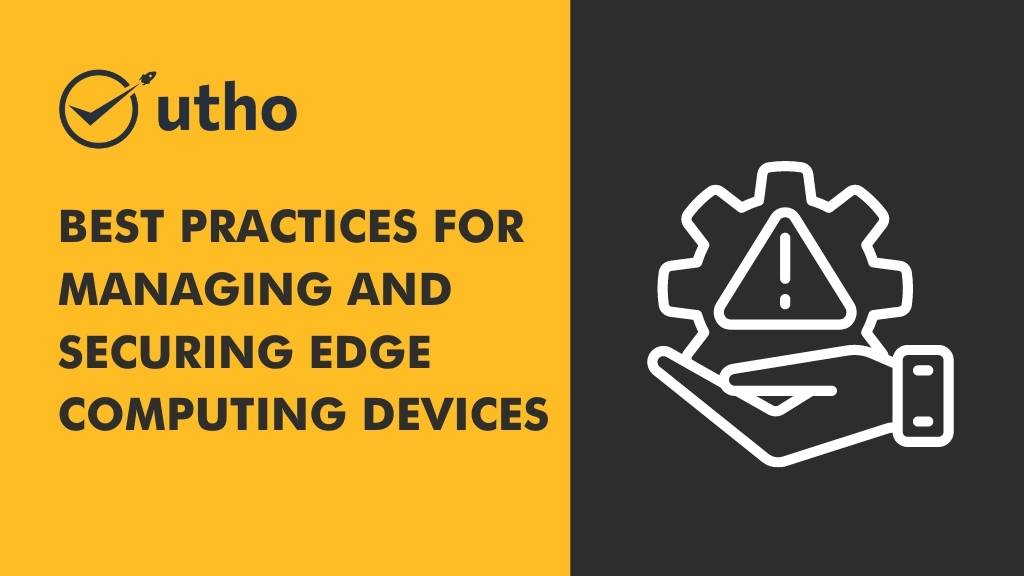Introduction
In recent years, edge computing has become increasingly popular as organizations seek to bring computing capabilities closer to where data is generated and consumed. Edge computing devices, which can range from simple sensors to advanced servers, have the potential to provide significant benefits in terms of reduced latency, improved performance, and enhanced security. However, managing and securing these devices can be challenging, especially when they are distributed across multiple locations.
Best Practices for Managing Edge Computing Devices
1. Develop a comprehensive inventory
It's important to have a comprehensive inventory of all edge computing devices deployed in your organization. This includes not only the physical devices but also their software and firmware versions, network addresses, and other relevant details. This information can be used to identify potential vulnerabilities and ensure that devices are updated and patched in a timely manner.
2. Establish a standard configuration
Having a standard configuration for edge computing devices can simplify management and reduce the risk of misconfiguration. This includes things like standard operating systems, software versions, and security settings. By establishing a standard configuration, you can ensure that all devices are secure and compliant with your organization's policies.
3. Implement remote management tools
Remote management tools can help you manage edge computing devices more efficiently, especially when they are distributed across multiple locations. These tools allow you to monitor device status, configure settings, and perform updates and patches remotely, reducing the need for on-site visits.
4. Monitor device performance
Monitoring the performance of edge computing devices can help you identify potential issues before they become serious problems. This includes monitoring CPU and memory usage, network traffic, and other key metrics. By proactively identifying and addressing performance issues, you can ensure that your devices are operating at peak efficiency.
Best Practices for Securing Edge Computing Devices
1. Use secure boot and firmware validation
Secure boot and firmware validation can help ensure that edge computing devices are running only authorized software and firmware. This can prevent attackers from installing malicious code that can compromise the security of your devices and your organization's data.
2. Implement strong access controls
Implementing strong access controls is critical for securing edge computing devices. This includes things like requiring strong passwords, limiting access to authorized users, and using multi-factor authentication. By implementing strong access controls, you can reduce the risk of unauthorized access and prevent data breaches.
3. Encrypt data in transit and at rest
Encrypting data in transit and at rest is essential for protecting the confidentiality and integrity of your organization's data. This includes using protocols like SSL/TLS to encrypt data in transit and using strong encryption algorithms to encrypt data at rest. By encrypting your data, you can ensure that it remains secure even if it is intercepted by attackers.
4. Regularly update and patch devices
Regularly updating and patching edge computing devices is essential for ensuring that they remain secure. This includes updating both software and firmware, as well as applying security patches as soon as they become available. By keeping your devices up-to-date, you can reduce the risk of known vulnerabilities being exploited by attackers.
Conclusion
Managing and securing edge computing devices can be challenging, but by following these best practices, you can ensure that your devices are operating at peak efficiency and are protected from potential security threats. By developing a comprehensive inventory, establishing standard configurations, implementing remote management tools, monitoring device performance, using secure boot and firmware validation, implementing strong access controls, encrypting data, and regularly updating and patching devices, you can ensure that your edge computing devices are secure and compliant with your organization's policies.
About Utho
If you're looking for a reliable and secure edge computing solution, Utho offers a range of services to meet your needs. Our team of experts can help you design and implement an edge computing strategy that is tailored to your specific requirements. With our state-of-the-art infrastructure and industry-leading security measures, you can rest assured that your edge computing devices are protected against cyber threats and data breaches. Contact us today to learn more about how we can help you manage and secure your edge computing devices.




